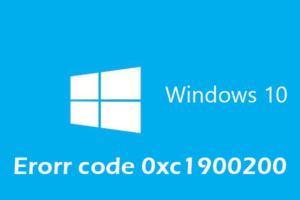-
Table of Contents
“Enhancing security: Microsoft disables TLS 1.0 and TLS 1.1 in Windows.”
Microsoft is planning to disable support for TLS 1.0 and TLS 1.1 in Windows in the near future.
The Importance of Upgrading to TLS 1.2 and Beyond in Windows
Microsoft is taking a significant step towards enhancing the security of its Windows operating system by disabling support for the outdated TLS 1.0 and TLS 1.1 protocols. This move is part of Microsoft’s ongoing efforts to prioritize the use of more secure encryption protocols, such as TLS 1.2 and beyond. Upgrading to these newer protocols is crucial for users and organizations to ensure the protection of their sensitive data and maintain a secure online environment.
TLS (Transport Layer Security) is a cryptographic protocol that provides secure communication over computer networks. It is widely used to establish a secure connection between a client and a server, ensuring that data transmitted between them remains confidential and tamper-proof. However, as technology advances and new vulnerabilities are discovered, older versions of TLS become less secure and more susceptible to attacks.
TLS 1.0 and TLS 1.1 have been around for over two decades and have served as the foundation for secure communication on the internet. However, they are now considered outdated and vulnerable to various security threats. These protocols lack the advanced security features and algorithms found in newer versions, making them an attractive target for hackers and cybercriminals.
By disabling support for TLS 1.0 and TLS 1.1, Microsoft is urging users to upgrade to the more secure TLS 1.2 and beyond. TLS 1.2 offers significant improvements in security, including stronger encryption algorithms and enhanced protection against known vulnerabilities. It also provides better compatibility with modern web standards and protocols, ensuring a seamless browsing experience while maintaining a high level of security.
Upgrading to TLS 1.2 and beyond is not only essential for individual users but also for organizations that handle sensitive data. In today’s digital landscape, where data breaches and cyberattacks are becoming increasingly common, organizations must take proactive measures to safeguard their information. By using outdated encryption protocols, they expose themselves to potential security breaches and legal liabilities.
Moreover, many regulatory bodies and industry standards, such as the Payment Card Industry Data Security Standard (PCI DSS), require the use of TLS 1.2 or higher for secure online transactions. Failure to comply with these standards can result in severe penalties and reputational damage. Therefore, it is crucial for organizations to upgrade their systems to ensure compliance and protect their customers’ data.
While upgrading to TLS 1.2 and beyond is highly recommended, it is essential to consider the potential compatibility issues that may arise. Some older systems and applications may not support these newer protocols, leading to connectivity problems. Therefore, it is crucial to assess the compatibility of existing systems and make the necessary updates or replacements to ensure a smooth transition.
In conclusion, Microsoft’s decision to disable support for TLS 1.0 and TLS 1.1 in Windows is a significant step towards improving the security of its operating system. Upgrading to TLS 1.2 and beyond is crucial for users and organizations to protect their sensitive data, comply with industry standards, and maintain a secure online environment. While compatibility issues may arise, it is essential to address them proactively to ensure a seamless transition to the more secure encryption protocols. By prioritizing security and staying up to date with the latest encryption standards, users and organizations can mitigate the risks associated with outdated encryption protocols and maintain a strong defense against cyber threats.
Understanding the Implications of Microsoft Disabling TLS 1.0 and TLS 1.1
Microsoft is taking a significant step towards enhancing the security of its Windows operating system by disabling support for TLS 1.0 and TLS 1.1. This move, which is set to take place soon, has important implications for both users and organizations that rely on these outdated protocols.
Transport Layer Security (TLS) is a cryptographic protocol that ensures secure communication over computer networks. It is widely used to protect sensitive data, such as passwords, credit card information, and personal details, from being intercepted and exploited by malicious actors. However, as technology advances and new vulnerabilities are discovered, older versions of TLS become less secure and more susceptible to attacks.
TLS 1.0 and TLS 1.1 have been around for over two decades and have served as the foundation for secure communication on the internet. However, they are now considered outdated and insecure due to the emergence of more robust and secure versions, such as TLS 1.2 and TLS 1.3. These newer versions offer stronger encryption algorithms and improved security features, making them the preferred choice for secure communication.
By disabling support for TLS 1.0 and TLS 1.1, Microsoft is effectively pushing users and organizations towards adopting the more secure TLS 1.2 and TLS 1.3 protocols. This move aligns with industry best practices and the efforts of other technology companies to phase out support for older TLS versions. It also serves as a proactive measure to protect users from potential security breaches and ensure a safer online experience.
However, the implications of this change are not limited to individual users. Organizations that rely on older versions of TLS may face compatibility issues and disruptions in their operations. Many legacy systems and applications may not be compatible with TLS 1.2 or TLS 1.3, requiring significant updates or even replacements to ensure continued functionality. This can be a complex and time-consuming process, particularly for large enterprises with extensive IT infrastructures.
To mitigate these challenges, Microsoft has provided guidance and resources to help organizations transition to the newer TLS versions smoothly. This includes documentation, tools, and support to assist in identifying and resolving compatibility issues. Additionally, Microsoft has been working closely with industry partners to ensure that widely used applications and services are updated to support TLS 1.2 and TLS 1.3, minimizing disruptions for end-users.
While the transition to newer TLS versions may require some effort and investment, it is a necessary step towards maintaining a secure and resilient digital ecosystem. The disabling of TLS 1.0 and TLS 1.1 by Microsoft serves as a wake-up call for organizations to prioritize security and stay up-to-date with the latest protocols and technologies. It highlights the importance of regularly updating software and systems to protect against evolving threats and vulnerabilities.
In conclusion, Microsoft’s decision to disable support for TLS 1.0 and TLS 1.1 in Windows is a significant move towards enhancing security. It aligns with industry best practices and encourages the adoption of more secure TLS versions. While this change may pose challenges for organizations, Microsoft is providing resources and support to facilitate a smooth transition. Ultimately, this move reinforces the importance of prioritizing security and staying updated with the latest protocols to ensure a safer online experience for all users.
Steps to Prepare for Microsoft’s TLS 1.0 and TLS 1.1 Disabling in Windows
Microsoft is taking a significant step towards enhancing the security of its Windows operating system by disabling support for TLS 1.0 and TLS 1.1. These older versions of the Transport Layer Security (TLS) protocol have been widely used for secure communication over the internet for many years. However, they are now considered to be outdated and vulnerable to various security threats. In order to ensure a safer online experience for its users, Microsoft has decided to disable these protocols in future Windows updates.
The disabling of TLS 1.0 and TLS 1.1 by Microsoft will have a significant impact on various applications and services that rely on these protocols for secure communication. Therefore, it is crucial for organizations and individuals to prepare for this change to avoid any disruptions in their operations. Here are some steps that can be taken to ensure a smooth transition:
1. Identify applications and services: The first step is to identify all the applications and services within your organization that use TLS 1.0 or TLS 1.1. This can be done by conducting a thorough inventory of your systems and network infrastructure. It is important to involve all relevant stakeholders in this process to ensure that no critical applications or services are overlooked.
2. Upgrade to TLS 1.2 or higher: Once you have identified the applications and services that rely on TLS 1.0 or TLS 1.1, the next step is to upgrade them to use TLS 1.2 or a higher version. TLS 1.2 is the most widely supported and secure version of the protocol currently available. It provides stronger encryption algorithms and better protection against known vulnerabilities. It is recommended to consult the documentation and support resources provided by the vendors of your applications and services to understand the upgrade process.
3. Test compatibility: After upgrading to TLS 1.2 or higher, it is crucial to thoroughly test the compatibility of your applications and services with the new protocol version. This can be done by setting up a test environment that closely resembles your production environment and conducting comprehensive testing. It is important to ensure that all functionalities and integrations are working as expected and that there are no compatibility issues with other systems or services.
4. Update operating systems and libraries: In addition to upgrading applications and services, it is also important to ensure that your operating systems and libraries are up to date. Microsoft has already released updates that disable TLS 1.0 and TLS 1.1 by default in Windows. Therefore, it is crucial to install these updates to ensure that your systems are in line with the new security requirements.
5. Communicate with stakeholders: Throughout the preparation process, it is important to maintain open and transparent communication with all relevant stakeholders. This includes users, customers, vendors, and internal teams. Inform them about the upcoming changes, the steps being taken to ensure a smooth transition, and any potential impact on their operations. This will help manage expectations and minimize any disruptions.
In conclusion, Microsoft’s decision to disable support for TLS 1.0 and TLS 1.1 in Windows is a significant step towards improving the security of its operating system. However, it requires organizations and individuals to take proactive measures to ensure a smooth transition. By following the steps outlined above, you can prepare for this change and ensure that your applications and services continue to operate securely and without any disruptions.
Exploring the Benefits of TLS 1.2 and TLS 1.3 in Windows
Microsoft is taking a significant step towards enhancing the security of its Windows operating system by disabling support for TLS 1.0 and TLS 1.1. These older versions of the Transport Layer Security (TLS) protocol have been widely used for secure communication over the internet for many years. However, with the emergence of more advanced and secure versions like TLS 1.2 and TLS 1.3, it has become imperative to phase out the older protocols.
TLS, the successor to the Secure Sockets Layer (SSL) protocol, is a cryptographic protocol that provides secure communication between clients and servers over the internet. It ensures that data transmitted between the two parties remains confidential and cannot be tampered with by malicious actors. TLS 1.0 and TLS 1.1 were introduced in 1999 and 2006, respectively, and have served as the industry standard for secure communication for a long time.
However, as technology advances and cyber threats become more sophisticated, it is crucial to keep up with the latest security measures. TLS 1.2 was introduced in 2008 and brought significant improvements in terms of security and performance. It introduced stronger encryption algorithms and enhanced protection against known vulnerabilities. TLS 1.3, the latest version of the protocol, was released in 2018 and further strengthened security by removing outdated and insecure features.
By disabling support for TLS 1.0 and TLS 1.1, Microsoft is encouraging users to upgrade to the more secure TLS 1.2 and TLS 1.3 protocols. This move will not only protect users from potential security breaches but also push the industry towards adopting the latest and most secure standards. It is a proactive step towards ensuring a safer online environment for everyone.
The benefits of TLS 1.2 and TLS 1.3 are numerous. Firstly, these newer versions offer stronger encryption algorithms, making it significantly harder for attackers to decrypt intercepted data. This is particularly important for sensitive information such as passwords, credit card details, and personal data. By using TLS 1.2 or TLS 1.3, users can have peace of mind knowing that their data is well-protected during transmission.
Secondly, TLS 1.2 and TLS 1.3 provide improved performance compared to their predecessors. They have optimized handshake protocols, reducing the time it takes to establish a secure connection between a client and a server. This results in faster and more efficient communication, benefiting both end-users and service providers.
Furthermore, TLS 1.3 introduces a feature called “0-RTT” (Zero Round Trip Time Resumption), which allows clients to resume a previous session without the need for a full handshake. This feature significantly reduces latency and improves the overall user experience, especially for applications that require frequent connections, such as real-time communication or online gaming.
In conclusion, Microsoft’s decision to disable support for TLS 1.0 and TLS 1.1 in Windows is a significant step towards improving the security of its operating system. By encouraging users to upgrade to the more secure TLS 1.2 and TLS 1.3 protocols, Microsoft is not only protecting its users but also pushing the industry towards adopting the latest and most secure standards. The benefits of TLS 1.2 and TLS 1.3, including stronger encryption, improved performance, and reduced latency, make them the ideal choice for secure communication over the internet. It is essential for users and service providers to embrace these newer protocols to ensure a safer and more efficient online experience.
Q&A
1. What is TLS 1.0 and TLS 1.1?
TLS (Transport Layer Security) 1.0 and TLS 1.1 are cryptographic protocols used to secure communication over computer networks.
2. Why is Microsoft disabling TLS 1.0 and TLS 1.1?
Microsoft is disabling these older versions of TLS because they have known security vulnerabilities and are no longer considered secure for protecting sensitive data.
3. When will Microsoft disable TLS 1.0 and TLS 1.1 in Windows?
Microsoft plans to disable TLS 1.0 and TLS 1.1 in Windows operating systems starting from the second half of 2020.
4. What are the implications of disabling TLS 1.0 and TLS 1.1?
Disabling these older TLS versions may result in certain websites, applications, or services becoming inaccessible if they rely solely on TLS 1.0 or TLS 1.1. It is important for organizations and developers to update their systems to support newer, more secure versions of TLS, such as TLS 1.2 or TLS 1.3.In conclusion, Microsoft is planning to disable TLS 1.0 and TLS 1.1 in the near future for Windows.







![[Solved]: “Error Code 0xC004F050” in Windows 11 in No Time](https://www.tipsbin.net/wp-content/uploads/2023/08/8e64f519d2390bfc001a41744be2cbd4-300x199.jpeg)

